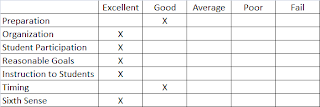
Pronunciation Powerpoint Slides:
 Family Activity Powerpoint Slides:
Family Activity Powerpoint Slides:
Family Activity Personal Descriptions and Scenarios: Cut personal descriptions into slips and label with and M or F (male or female). Keep personal descriptions in separate envelopes by family until you count the students in class and determine which families to use. Cut scenarios into slips and keep in separate envelopes. Give scenario envelopes to students once they have found their families.


The main purpose of this class, particularly the family activity, was to get students involved in the subject matter, bring it alive, and provoke critical thought. However, my expectations for the family activity were a little too high. The following were some of its strong and weak points:
Strong:
- Students enjoyed the different stories.
- Students got to practice critical thinking.
Weak:
- The activity was too long to hold student's rapt attention the whole time.
- Some of the vocabulary was too difficult.
- Families larger than four struggled to find each other (I made them smaller after the first class).
- One of the scenarios did not have a clear solution, or at least one that could be described in simple English.
- In one of the three classes, we did not have time to present the skits.
And lastly a self-evaluation...













